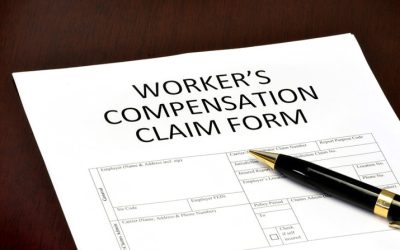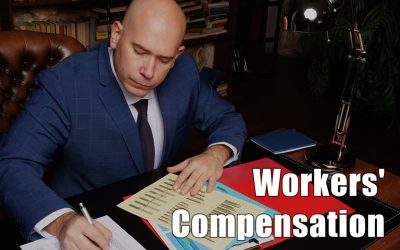A worker sustaining an injury or contracting a job-related illness is eligible for workers’ compensation benefits. Medical record analysis forms an important part of the eligibility determination process. An occupational disease is caused by the conditions to which a specific type of worker is exposed. Occupational illnesses comprise health conditions that are contracted or worsened due to the nature of a particular kind of work. For example, workers in a coal mine, foundry, cement factory, motor vehicle manufacturing plant and so on, could be affected by a lung disease that is mainly caused by the dirty, dusty air in the work environment. Such diseases are not triggered by any specific traumatic event. Moreover, there will be no specific date or injury or disease to point out. A person who has been working for a long time – performing heavy physical labor – in the manufacturing industry, construction industry, or other material handling industry could develop a pathologic condition of the shoulder, back, hip, neck or knees. Such workers also may not be able to pinpoint any traumatic event that caused the condition, or a specific date of injury or disease. Even desk bound workers working at the computer, engaged in work requiring repetitive hand movements may develop conditions such as carpal tunnel syndrome.
Occupational Diseases May Be Compensable
State workers’ compensation statutes allow workers to receive benefits for occupational diseases. To become eligible, the employee must prove that the injury arose out of and in the course of the employment. Most employers and insurers understand the concept of occupational injury/disease and give the due compensation, whereas some tend to deny occupational injury/illness claims on the grounds that the worker is unable to identify a specific traumatic event that led to or precipitated the injury or disease.
To receive compensation for an occupational illness, a worker must prove that:
- The disease has been caused by the conditions characteristic and unique to his/her specific occupation or employment, and
- The disease is not an ordinary disease of life to which the general public is usually exposed
Examples of occupational illnesses are asthma, allergic reactions, heart attacks and cancer. There must be a direct connection between the work environment and the disease.
There Is a Time Limit for Filing a Claim
An employee disabled by an occupational disease can receive the same benefits as for an on-the-job injury. The time limit for filing a claim is the later of the two following dates:
- 2 years from the date of the disabled employee’s disability, or
- 2 years from the time the disabled worker knew or should have known that the disease was due to the nature of employment.
If the employee unfortunately dies, the dependents must file within the above time limits. When a worker suffers from an occupational illness, he/she may be disabled even if there is no lost time from work. To determine the employee’s right to benefits, the date of disablement is determined by a Workers’ Compensation Law Judge.
Occupational hearing loss is also compensable, and time limits vary in this case. The waiting period for a worker to file a claim is:
- 3 months from the date the worker is removed from the harmful noise in the workplace, or
- 3 months after leaving the employment in which the exposure to the harmful noise occurred.
The last day of either 3-month period is considered the date the disability began. The employee can file beyond the 2-year limit, if it is done within ninety days of knowledge that the hearing loss is related to his/her employment.
The date that an injured worker is told that he/she has an occupational disease caused by work is considered the date of accident for obtaining the compensation amount. This must be clearly documented in the employee’s medical record by his/her doctor. The most important question in this regard is what caused the occupational disease. Medical evidence is a must if the employee is to get benefits for an occupational disease claim.
Federal Occupation Disease Programs
The federal government has created two federal occupation disease programs, administered by the U.S. Department of Labor’s Office of Workers Compensation. Some employees may be eligible for benefits under both a federal program and their own state’s workers’ compensation program.
- Black Lung Program: This provides medical coverage for treating pneumoconiosis, the scientific term for black lung disease that is caused by exposure to coal dust. It provides benefits to workers disabled by the disease, and death benefits to workers’ survivors.
- Energy Employees Occupational Illness Compensation Program: It provides medical and other benefits to current or former employees of the Department of Energy, and certain vendors/contractors who have contracted cancer or other illnesses as a result of exposure to radiation, silica, or beryllium.
Occupational illnesses comprise a considerable percentage of workers’ compensation claims in the United States. Large-scale exposure to air pollutants in automobile factories and manufacturing plants, many years of hard physical labor in factories, as well as various mental/physical problems that result from workplace exposure may be entirely compensable under the Workers’ Compensation Act. Proving that the work environment caused the employee’s disease could be a challenge in a workers’ compensation claim. The process involves medical record retrieval and review to understand the medical aspects. If the physicians’ records indicate that the worker’s condition was pre-existing, he/she may not qualify to receive workers’ compensation benefits. Compared to an injury caused by one’s work, an occupational disease could be more difficult to prove. The worker can obtain the assistance of an attorney who will identify the issue, gather the medical proof necessary to prevail with the help of a medical review company, and pursue the claim through the workers’ compensation system.




